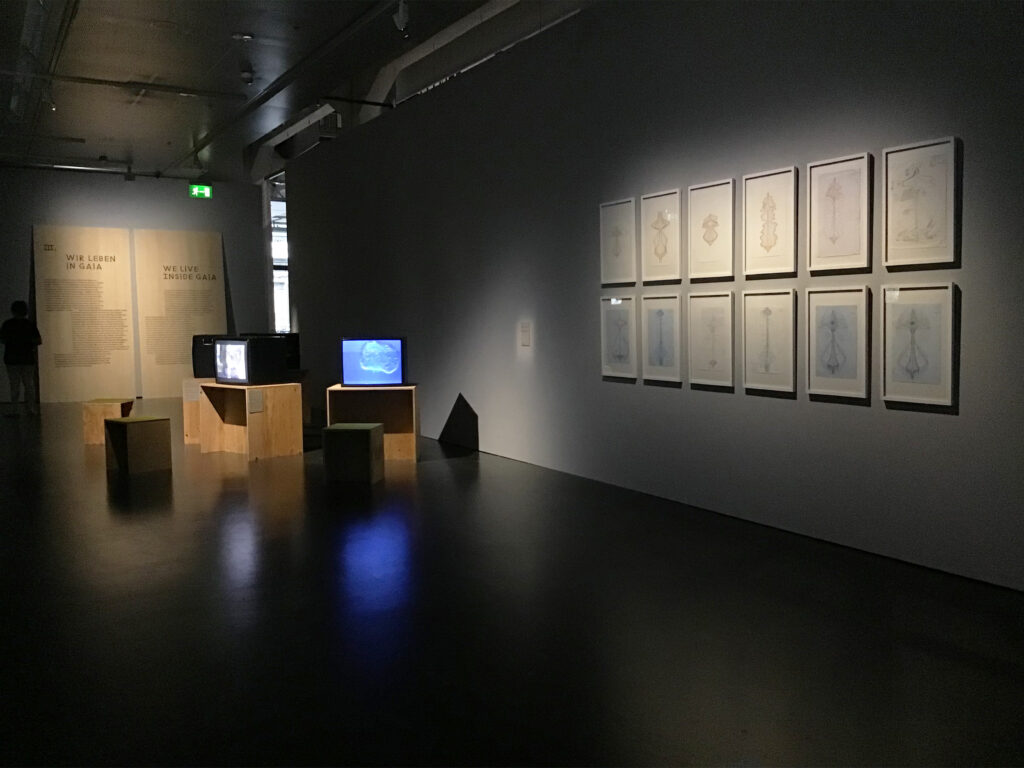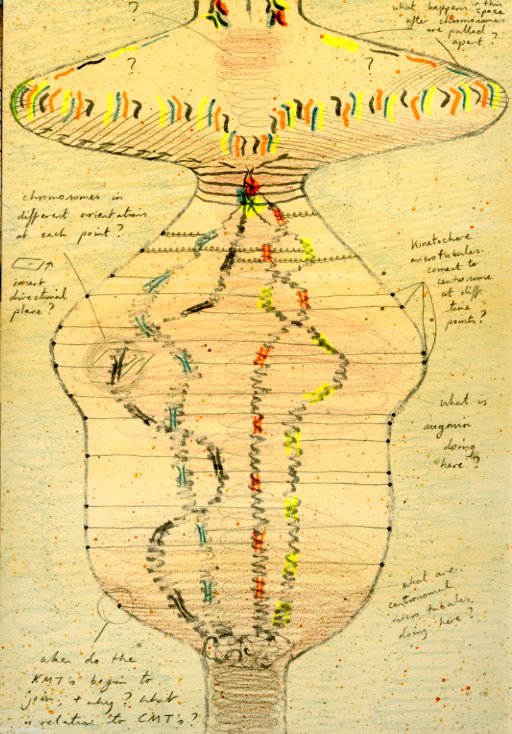Cell division, also called mitosis, occurs in all living things and is a fundamental process for life. During mitosis, a cell duplicates all of its contents, including its chromosomes, and splits to form two identical daughter cells. Mitosis is facilitated by dynamic protein polymers, filaments termed microtubules, which coalesce into a complex structure – the mitotic spindle. The spindle exerts physical force upon duplicated chromosomes, ultimately facilitating their faithful segregation into two equal complements. This is usually followed by cytokinesis – the physical cleavage of the cell into two, through the constriction of the cell membrane.
Here, we have moved away from the textbook images of cell division that show artificial gaps between phases of activity, to an integrated image of the whole at once. We sit together, artist and scientist, drawing stages – sub-processes within the whole – and asking questions “is it like this?”. Then we take a wider view, aiming to connect the stages. At this point we move outside of traditional structure-function relationships, and we might think of the process as a dance, a musical score, or a changing array of energy. We create a four-dimensional template in which to draw, and this provides a framework in which to represent the relationships that are at play in the process we aim to represent. We imagine cell division like a polyphony, and carefully draw the energy landscapes, the rhythmic organisations, the tunes. The feeling for the process takes centre stage as we revise, redraw and reform, synthesizing our drawings first in pencil and then, later, into colour ). We ask other scientists to ‘read’ the image and they tell us they see cell division. ‘Mitosis Score’ is a new image of cell division, all stages connected in one image, and it reminds us of other organic life forms.
These new images raise their own questions – what is happening in the negative space mid-way through? Can these be answered with traditional science, or with something more holistic? And so we can continue, with untested hypotheses formed through and of drawing, to experiment further in art and science.














